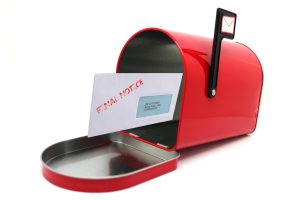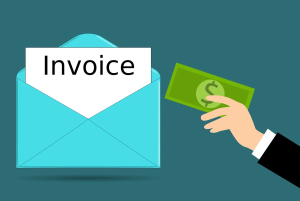The “Ostrich Effect”: Why Your Customers Are Ghosting You (And How to Break the Silence)
If you are reading this, you are likely staring at an unpaid invoice and wondering, “Why won’t they just call me back?”
You have sent the polite reminders. You have left voicemails. You have tried to be understanding. In return, you get silence. This isn’t just bad manners; it is a psychological phenomenon known as the Ostrich Effect. When faced with financial stress, debtors bury their heads in the sand, hoping that if they ignore your emails long enough, you will simply give up.
And usually, they are right. Most internal accounting teams do give up after 90 days.
But when you partner with NexaCollect, the dynamic shifts instantly. We don’t let them hide. We turn the “silence” into a calculated escalation that forces a decision: Pay now, or face the consequences.
3 Reasons Why They Ignore You (But Won’t Ignore Us)
Internal billing departments lack leverage. Third-party agencies command attention. Here is the psychology behind the switch.
1. The “Vendor vs. Authority” Shift
To a debtor, you are a vendor. A relationship. Someone they can negotiate with or stall. When they receive a letter from NexaCollect, the relationship ends. We are a regulated third-party entity. Our presence signals that the debt has moved from “accounting issue” to “legal liability.”
-
The Stat: Industry data shows that a formal third-party demand is 3x to 5x more effective at eliciting a response than an internal invoice reminder.
2. The Threat of Credit Damage (The 100-Point Drop)
Your internal emails might be annoying, but they don’t threaten their financial future. Our demands do.
-
The Reality: A collection account reporting to Equifax, Experian, or TransUnion can drop a credit score by 100+ points overnight. For a business owner trying to secure a line of credit or a consumer trying to rent an apartment, this is a non-negotiable risk. They pay us to protect their score.
3. The “Litigation Certainty”
Debtors ignore you because they think you won’t sue over $2,000. They might be right. But they don’t know our capabilities.
-
The Data: In 2024, consumer debt lawsuits surged to pre-pandemic levels. More importantly, over 70% of debt lawsuits result in a Default Judgment because the debtor fails to show up.
-
The Leverage: We make them understand that ignoring the debt doesn’t stop the lawsuit; it guarantees they will lose it.
The Escalation Timeline: What Happens When They Ignore Us?
We use a tiered pressure system designed to break the silence.
-
Day 1-30 (The Wake-Up Call): We deploy Step 2 (Flat-Fee Demands). These are official, Regulation F compliant notices. They strip away the “I didn’t see the invoice” excuse.
-
Day 31-60 (The Pressure Cooker): If they continue to ghost, we move to Step 3 (Contingency). Our team begins skip-tracing to find new numbers and employers. We apply intensive phone pressure.
-
Day 90+ (The Nuclear Option): If they still refuse to pay, we review the file for Step 4 (Legal). If the debtor has assets (wages, property, bank accounts), our attorney network files suit. A judgment leads to wage garnishment and bank levies.
Strategic Insight: The Risk of B2B Defaults
If you are a B2B business, ignoring a slow-paying client is dangerous.
-
The Stat: Research indicates that one payment default creates a 20% probability that your client will fail within 12 months. If they default on three obligations, that probability jumps to 62%.
-
The Takeaway: If they are ignoring you, they are likely ignoring others. You need to be the “squeaky wheel” that gets paid before they file for bankruptcy.
FAQ: The Mechanics of “Ignoring It”
Q: Can a debtor simply block your calls?
A: They can block a number, but they cannot block the United States Postal Service or a Process Server. Regulation F (the modern FDCPA) also allows us to use email and text messaging (with proper opt-outs) to ensure our message lands. They can hide, but they cannot claim ignorance.
Q: Does the “Statute of Limitations” mean the debt disappears?
A: No. This is a common myth. The Statute of Limitations (SOL) only limits the time we have to sue them (typically 3-6 years depending on the state). It does not erase the debt. We can still collect, call, and report the debt to credit bureaus (for up to 7 years) long after the SOL has passed.
Q: What if they ignore the court summons?
A: That is actually the best-case scenario for you. If they ignore the summons, the court issues a Default Judgment. This gives us the legal power to garnish wages or freeze bank accounts without a trial.
Break the Silence. Secure Your Revenue.
Stop letting debtors control your cash flow with their silence. Use a system designed to get a response.

